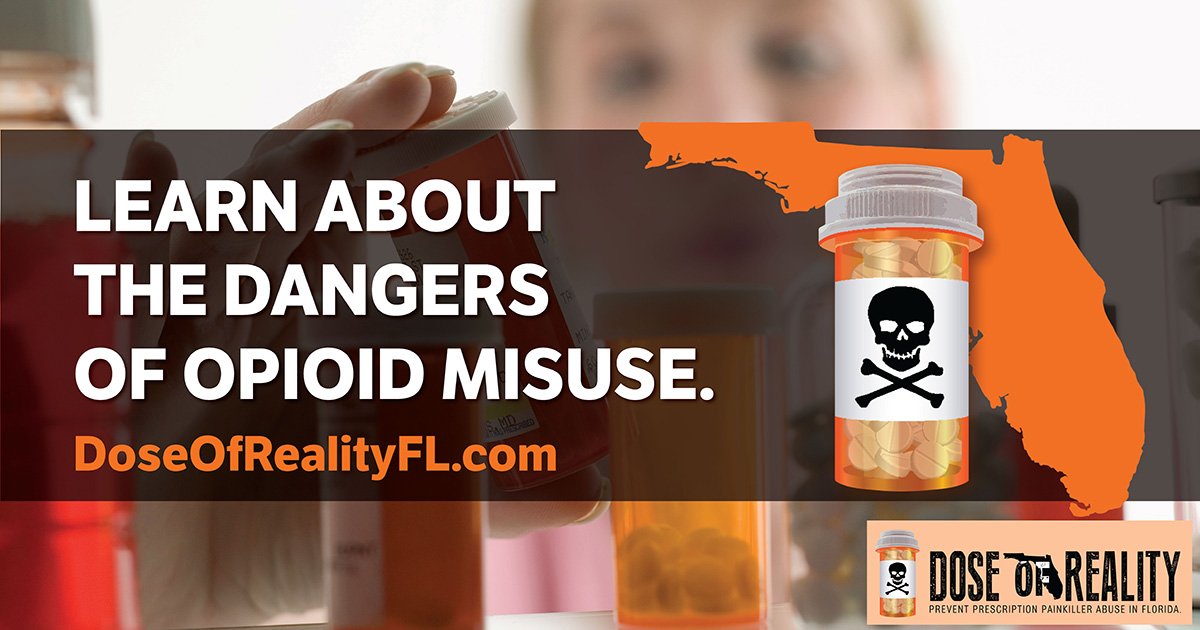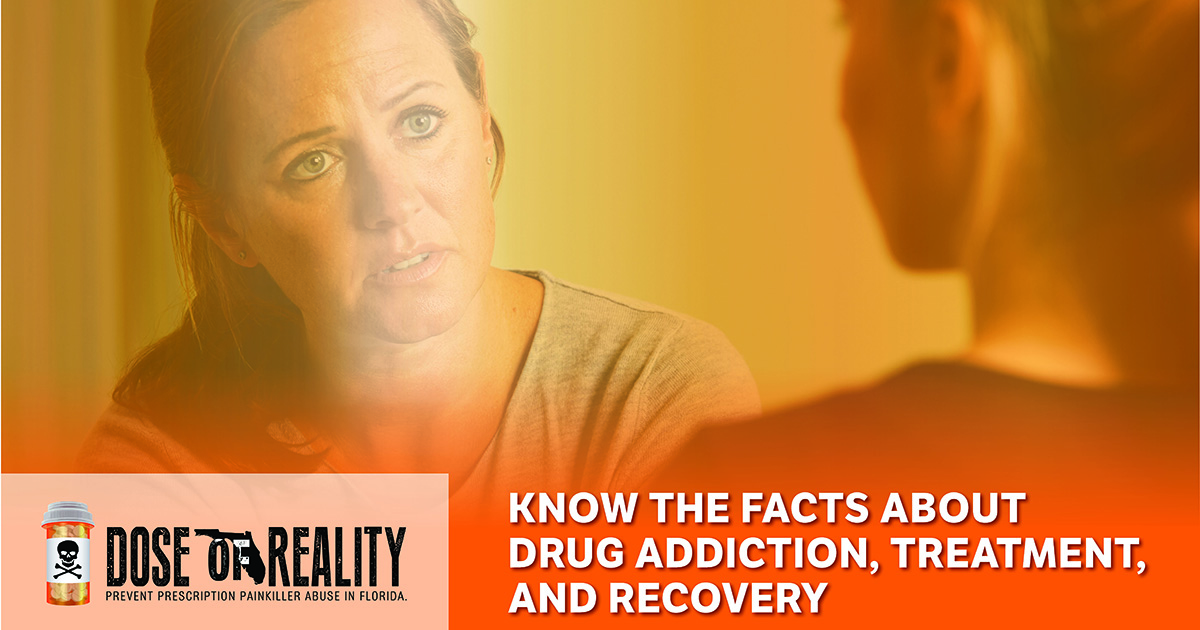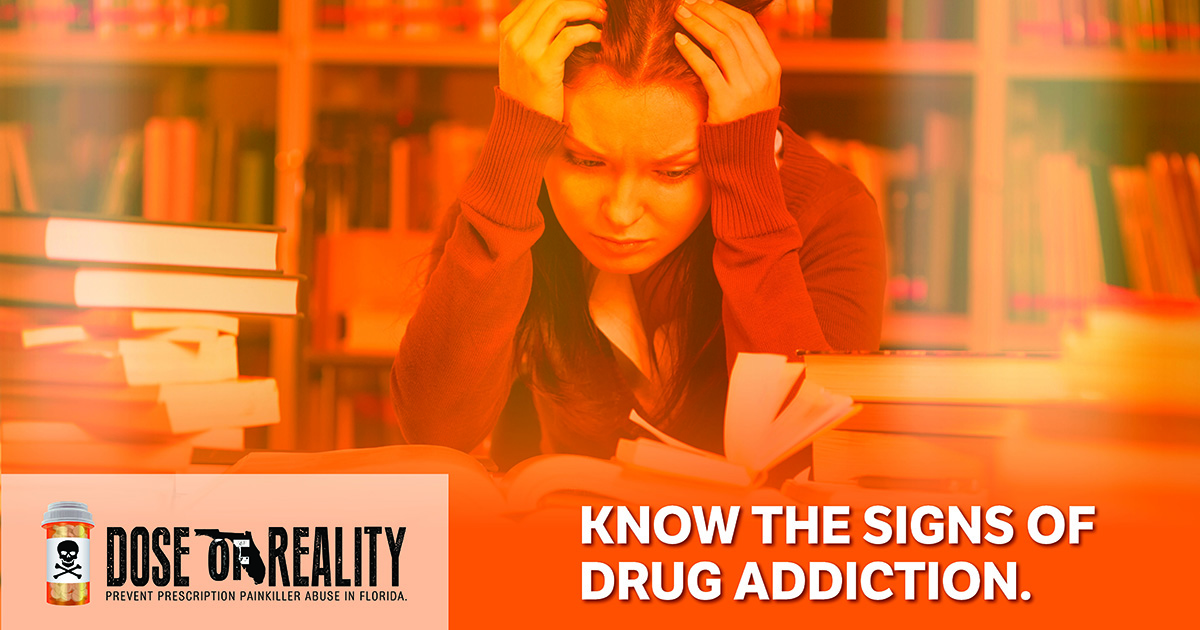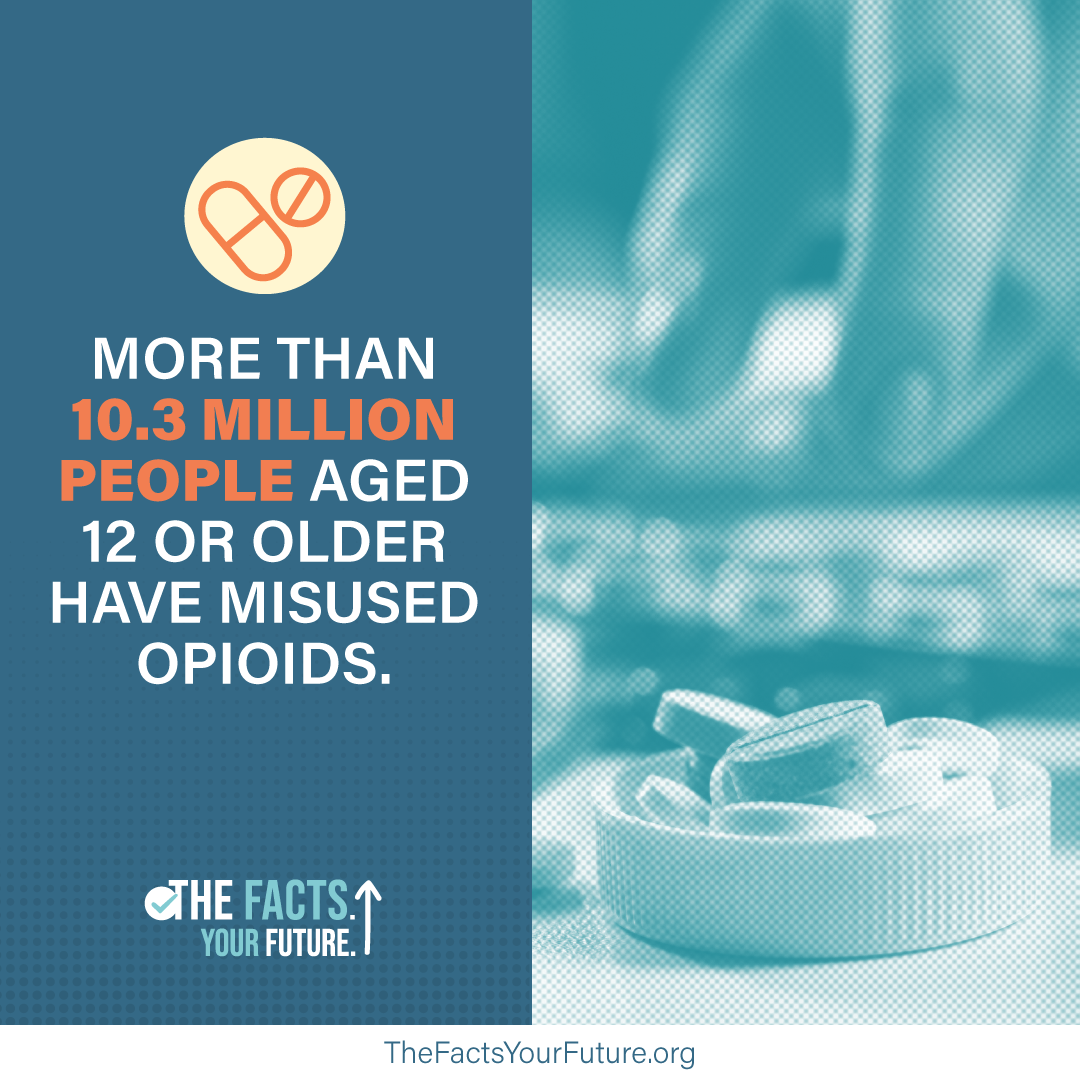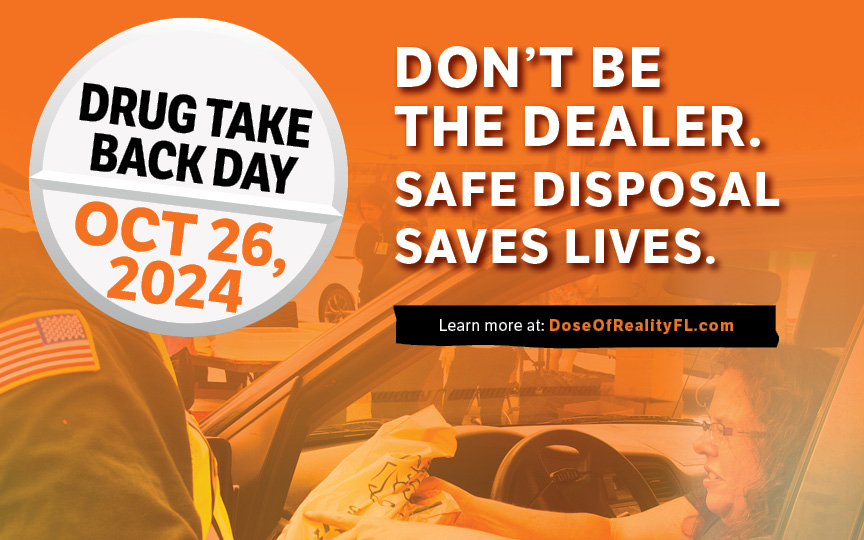It is important to get your “Dose of Reality” about the risks and dangers of using prescription painkillers, as well as the signs of misuse, before it becomes a problem for you or your loved ones.
What Are Opioids?
Prescription opioids (also known as prescription painkillers) are a category of commonly-prescribed narcotics. Prescription opioids are typically in pill form, but can also be patches or liquids, such as codeine cough syrup. When taken as directed by a medical professional, they’re relatively safe and can be beneficial. However, there is always a risk of addiction. And that risk increases greatly with duration of use and misuse.
Common Prescription Opioid (Narcotic) Painkillers
| Codeine | Various Brand Names | |
|---|---|---|
| Hydrocodone | Brand Names: Vicodin®, Lortab®, Lorcet® | |
| Oxycodone | Brand Names: OxyContin®, Percodan®, Percocet® | |
| Fentanyl | Brand Name: Duragesic® | |
| Morphine | Brand Names: Kadian®, Avinza®, MS Contin® | |
| Tarpentadol | Brand Names: Nucynta® | |
| Propoxyphene | Brand Name: Darvon® | |
| Hydromorphone | Brand Name: Dilaudid® | |
| Meperidine | Brand Name: Demerol® | |
| Methadone | Various Brand Names | |
What is Prescription Painkiller Misuse?
- Taking prescription painkillers in a way that was not prescribed, such as taking more than prescribed, combining painkillers with alcohol or other drugs, or crushing pills into powder to snort or inject them.
- Taking someone else’s prescription painkiller, even if you’re doing so for the medication’s intended purpose, to ease pain.
- Taking prescription painkillers for the sole purpose of feeling good or getting high.
Repeated misuse of prescription opioids can lead to substance use disorder (also known as addiction), and even death.
Who is at Risk For Substance Use Disorder?
People who misuse prescription painkillers have a greater risk of substance use disorder than people who take them as prescribed – but it is important to remember that the medication itself is addictive. Even someone who takes opioids as prescribed by a doctor might develop a dependence on the drug. Long-term opioid use often begins when opioids are prescribed to treat acute pain, such as broken bones and surgeries. According to the Centers for Disease Control and Prevention, in most cases opioids should be prescribed for a short period of time.
When someone who has become physically dependent on a prescription painkiller stops using it, they will likely experience withdrawal symptoms including restlessness, difficulty concentrating, anxiety, anger, depression, muscle or bone pain, nausea and more. Therefore, the risk of addiction should be weighed against the benefits of the medication and any concerns should be discussed with your doctor. Learn more on our Safe Acquisition page.
What Are The Dangers of Prescription Painkillers?
Taking just one dose too large can cause serious health problems and potentially lead to death. Here’s a dose of reality: Deaths from unintended drug overdoses have been rising sharply in recent years. In 2023, among 107,543 drug overdose deaths, 81,083 involved opioids- over 75%. In more recent reports, the CDC has stated that ‘overall, drug overdose deaths declined in 2023, the first time since 2018 but the death toll still remains astronomically high..
Remember, the risk of overdose and death increases greatly when prescription painkillers are combined with alcohol or other drugs. The combination of opioid pain relievers and benzodiazepines, anti-anxiety drugs such as alprazolam (Xanax), diazepam (Valium), clonazepam (Klonopin), and Lorazepam (Ativan), is particularly risky. In the first half of 2023, there were more than 4,200 individuals that died with one or more prescription drugs in their system.
What Are The Signs?
Common signs of overdose (Call 9-1-1 immediately if you suspect an overdose)
- Unresponsiveness or unconsciousness.
- Slow, irregular heartbeat or pulse.
- Slow, irregular breathing or no breathing.
- Vomiting or gurgling.
- Constricted pupils.
- Blue or purple lips and/or fingernails.
Common signs of drug misuse
- Unable to meet responsibilities at work, school, or home because of drug use.
- Using drugs under dangerous conditions or taking risks, such as driving while on drugs.
- Drug use is resulting in legal trouble such as stealing to support drug use.
- Drug use is causing problems in relationships, such as arguments with family members and loss of friends.
- Drowsiness
- Shallow or slow breathing
- Nausea and/or vomiting
- Slurred speech
- Change in sleep habits
- Mood swings
- Extreme euphoria
- Irritability
- Abandonment of normal responsibilities
- Decreased motivation
- Depression
Common signs of drug addiction
- A drug tolerance has been built up requiring more drugs in order to experience the same effects.
- Drugs are taken to avoid or relieve withdrawal symptoms.
- Activities once enjoyed have been stopped due to loss of interest
- Drug use is continued despite interfering with work, home, or other activities
- Life revolves around drug use.
Learn to recognize the potential signs of drug overdose and know the proper steps to take if you suspect someone is overdosing.
Fast Facts on Fentanyl
Download the free toolkit here.
Download the toolkit in Spanish here.
Spread The Word
Help bring awareness to this epidemic by downloading and sharing these graphics on your social media:
